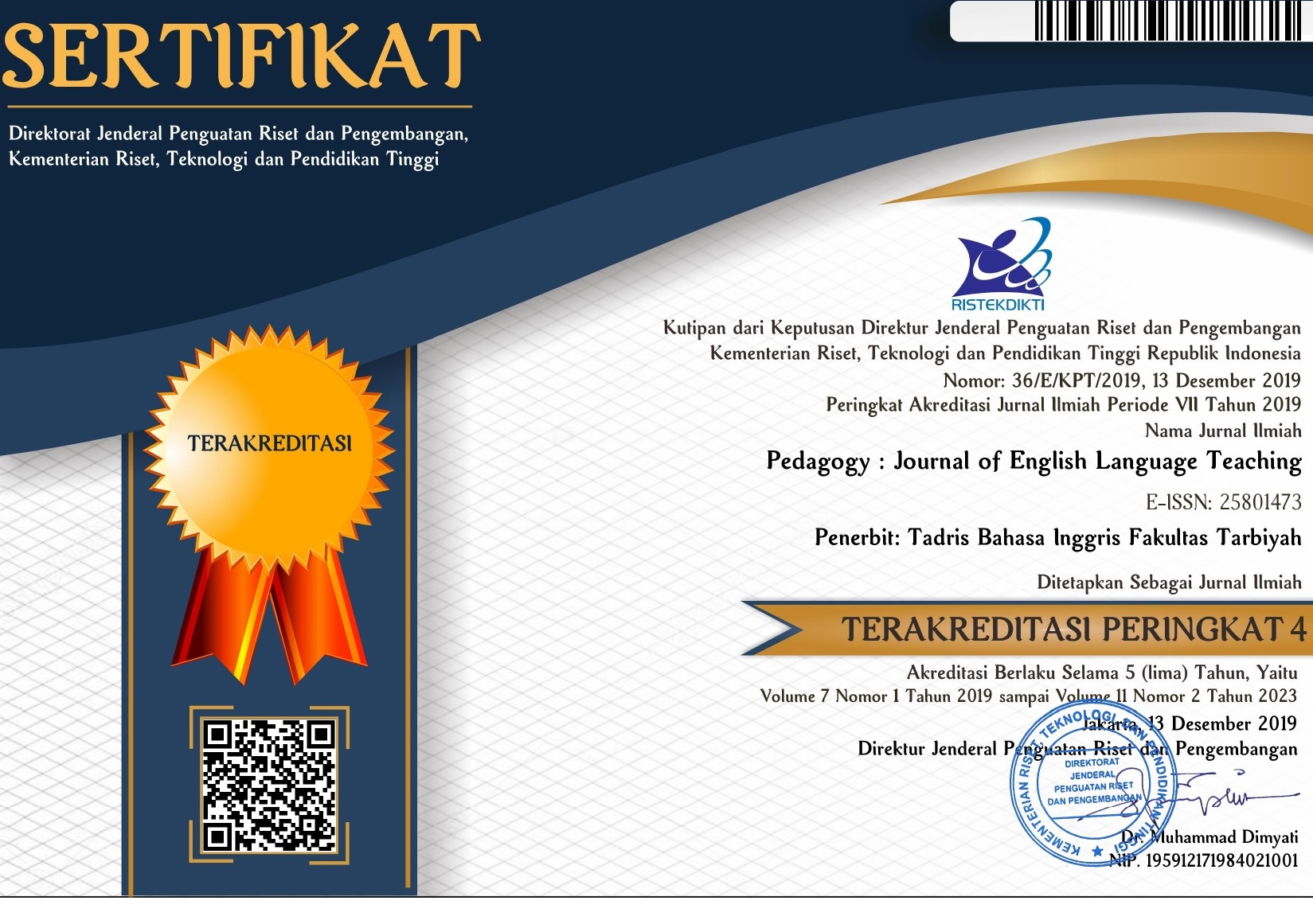Speech Acts and Politeness: A Case Study on Indonesian EFL Learners in Teaching and Learning Practice
DOI:
https://doi.org/10.32332/joelt.v9i1.2479Keywords:
case study, EFL learners, politeness strategy, speech acts, teaching and learning activityAbstract
This research is intended to know the kinds and classification of speech acts and the politeness implication in teaching and learning activities. The subject of this research was the sixth-semester EFL learners of STKIP PGRI Bandar Lampung. The object of this research was speech acts used by EFL learners. The researcher used the observation technique combined with noting technique in collecting the data. In this research, the researcher used the qualitative multiple study. The result of the study showed that speech acts used by EFL learners were direct and indirect speech acts. The speech acts were classified into the assertive, commissive, directive, and expressive. The politeness strategy acted by EFL learning included positive and negative politeness. The use of positive politeness creates a closeness among the teacher and the students, creates a pleasant classroom atmosphere, and increases the students’ motivation. Meanwhile, the use of negative politeness reduces amount degree of friendliness among the students and the teacher and creates a formal learning situation. Theoretically, this research has implications for the development of scientific insights about pragmatics, especially speech acts, and practically it gives implication to EFL teachers and students in understanding, analyzing, and interpreting the use of speech acts in communication.
















